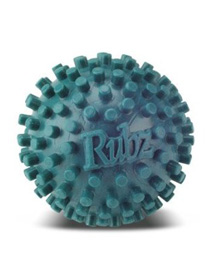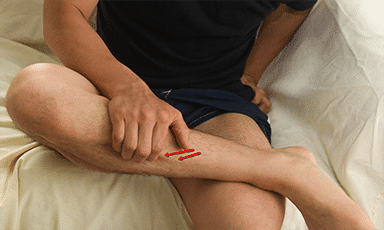Overview
One of those often-painful soft tissue that attaches to heel spurs at the bottom of the foot is called "plantar fascia". Fascia, located throughout the body, is a fibrous connective tissue similar to a ligament. You can see fascia when you handle meat. It is the white, connective tissue separating layers of meat or attaching to bones. The "plantar" fascia in our bodies is that fascia which is seen on the bottom (or plantar portion) of the foot, extending from the heel bone to the ball of the foot. Compared to other fascia around the body, plantar fascia is very thick and very strong. It has to be strong because of the tremendous amount of force it must endure when you walk, run or jump. But while the plantar fascia is a strong structure, it can still get injured, most commonly when it is stretched beyond its normal length over long periods of time. When plantar fascia is injured, the condition is called "plantar fasciitis", which is usualy pronounced either "plan-tar fash-I-tis" or "plan-tar-fash-ee-I-tis." (Adding "-itis" to the end of a word means that structure is inflamed.) It is sometimes known more simply as 'fasciitis'. Plantar fasciitis is the most common type of arch pain.
Causes
Foot cramps are caused by muscles suddenly spasming uncontrollably. They most commonly cause foot arch pain but can occur anywhere in the foot and lower leg. Usually, they only last a few seconds but in more extreme cases they can continue longer. Often, there is no obvious reason why people suffer from foot cramps, but possible causes include diet, muscle tightness and weakness, dehydration, reduced circulation and fatigue. Sometimes, it can be a sign of an underlying medical condition so if the problem keeps recurring, do consult your doctor. Some of the best ways to reduce the incidence of foot arch pain from cramps include doing exercises, using heat, drinking plenty of water, using toe stretchers and ensuring you are wearing good footwear.
Symptoms
Most flat feet do not cause pain or other problems. Children may have foot pain, ankle pain, or lower leg pain. They should be evaluated by a health care provider if this occurs. Symptoms in adults may include tired or achy feet after long periods of standing or playing sports.
Diagnosis
Diagnosis of a plantar plate tear can often be challenging due to the complex nature of the anatomy of the foot. Careful history taking and an examination of the area of pain is required to determine the extent and cause of the tear. If necessary, further investigations such as x-rays or diagnostic ultrasound may be ordered by your podiatrist to help evaluate the severity of the problem.
Non Surgical Treatment
In mild cases patients would benefit from custom made semi rigid full length custom made foot orthoses fitted into appropriate supportive footwear, preferably with laces or a velcro straps. In more severe cases patients may require a custom made Arizona lace up ankle brace or a posterior shell Ankle Foot Orthosis. These offer significantly more control and support than the foot orthoses. In severe cases surgery may be required to repair the tibialis posterior tendon and realign the foot and ankle, or fuse the subtalar joint. It is important to note there are many risks involved in having surgery and these must be considered prior to going ahead.
Surgical Treatment
In cases where cast immobilization, orthoses and shoe therapy have failed, surgery is the next alternative. The goal of surgery and non-surgical treatment is to eliminate pain, stop progression of the deformity and improve mobility of the patient. Opinions vary as to the best surgical treatment for adult acquired flatfoot. Procedures commonly used to correct the condition include tendon debridement, tendon transfers, osteotomies (cutting and repositioning of bone) and joint fusions.
Prevention
Stretch and strengthen important muscles in your feet, ankles and legs in order to guard against future strain. Make sure to acquire suitable arch supports and inserts if necessary, and that your shoes are shock absorbent and in good condition. Wearing tattered shoes provides no protection, and runners should replace their footwear before exceeding 500 miles of usage. Athletes new to arch supports should gradually build their training routine, allowing their feet to become accustomed to a new stance.
Stretching Exercises
People with flexible feet who develop fallen arches may benefit from foot strengthening exercises, notes the Nicholas Institute of Sports Medicine and Athletic Trauma. Standing on a towel in bare feet and grasping the material with the toes is an easy foot-strengthening exercise that can be done at home. Standing on one leg while arching and releasing the foot may also prove useful. Doctors may prescribe gentle stretching exercises for the foot and ankle tendons.
- Jun 02 Tue 2015 20:36
Pain Outside Arch Foot After Running
文章標籤
全站熱搜
 留言列表
留言列表
禁止留言


 留言列表
留言列表


